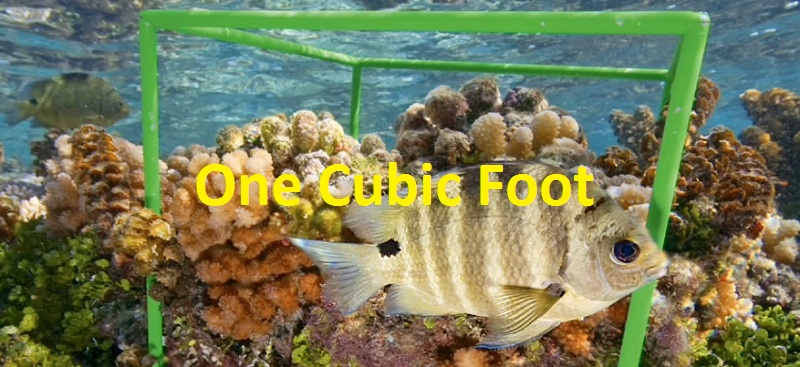Chapter 1. Scientific Literacy: One Cubic Foot
Introduction

To answer the question “How much life could you find in one cubic foot?” photographer David Liittschwager took a 12-inch metal cube to five different environments. At each location he used the cube to catalog the organisms that lived in or moved through that biome. Liittschwager and a team of biologists sorted through the habitat cubes over a three week period, identifying all the organisms they could. Roughly a thousand individual organisms were photographed in the five environments:
- Central Park (NY)-temperate forest
- Moorea (French Polynesia)-coral reef
- Monteverde (Costa Rica)-tropical forest
- Table Mountain (South Africa)-Mediterranean scrub
- Duck River (Tennessee)-freshwater
The diversity of organisms that Liittschwager photographed is represented in a gallery for National Geographic magazine that can be found here: http://ngm.nationalgeographic.com/2010/02/cubic-foot/liittschwager-photography. In each section of the activity, you’ll be asked to think about elements of the videos’ content and presentation as they relate to the scientific method, which you learned about in Chapter 2.
1.1 Section A
Instructions
1. Select one of the five videos below to watch.
2. Watch the video you chose with this question in mind: What is the goal of Dr. L's study?
Central Park (NY) - temperate forest
Moorea (French Polynesia) - coral reef
Monteverde (Costa Rica) - tropical forest
Table Mountain (South Africa) - Mediterranean scrub
Duck River (Tennessee) - freshwater
1.
What is the question that Dr. L hopes to answer? What is his hypothesis?
1.2 Section Title: Proto Takes Text from Missing Photo (Part 2)
Instructions
1. Rewatch the video.
2. As you watch the video for a second time, take notes on how the scientific method is being applied by Dr. L.
Central Park (NY) - temperate forest
Moorea (French Polynesia) - coral reef
Monteverde (Costa Rica) - tropical forest
Table Mountain (South Africa) - Mediterranean scrub
Duck River (Tennessee) - freshwater
2.
What type of study, observational or experimental, is Dr. L conducting? Please explain your answer.
1.3 Section Title: Proto Takes Text from Missing Photo (Part 3)
3.
Provide an outline of Dr. L's methods. List at least 4 points.
1)
2)
3)
4)
4.
How is the data reported?
1)
2)
3)
4)
1.4 Section Title: Proto Takes Text from Missing Photo (Part 4)
5.
What tools of the scientific process were depicted in the video?
| Tools of the Scientific Process | |
|---|---|
| Quantification | |
| Measurement | |
| Identification | |
| Observation | |
| Prediction | |
| Hypothesis | |
| Experimentation |
1.5 Section Title: Proto Takes Text from Missing Photo (Part 5)
Instructions
1. Rewatch the video as necessary.
2. This time take notes on how space is structured, the abiotic conditions, and the types of species you observe.
6.
How might the data gathering be made more scientifically rigorous?
7.
What type of scientific information would be necessary in order to determine how the species identified in each ecosystem depend upon one another?
1.6 Section Title: Proto Takes Text from Missing Photo (Part 6)
8.
Was Dr. L’s hypothesis supported by the evidence he collected? Please explain you answer.
9.
What other questions did Dr. L’s experiment raise about the study of biodiversity (questions that can be explored in future experiments)?
Summary Questions
Instructions
Finally, answer these summary questions.
10.
What did these videos intend to illustrate about science and biodiversity?
11.
Why might knowing this particular regions biodiversity matter on a broader scale?
Activity Report
New box content